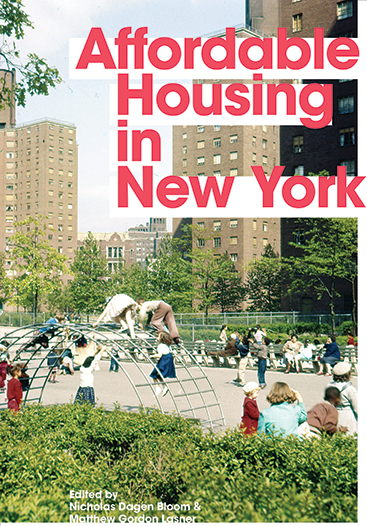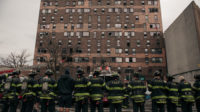Affordable Housing in New York: The People, Places, and Policies that Transformed a City, edited by Nicholas Dagen Bloom and Matthew Gordon Lasner, Princeton University Press, November 2015, 336 pages, $39.95.
This is a superb history of the numerous ways that New York has provided subsidized housing for low-, moderate-, and middle-income residents from around 1900 to the present. As such, it provides a model to other cities—consider, for example, that the New York City Housing Authority (NYCHA) is the largest public housing agency in the country, overseeing 178,000 low-income apartments, with an official—probably underestimated— population of 403,000. That would qualify as a good-sized city in most places in this country.
In a series of essays, editors Nicholas Bloom and Matthew Lasner, and historians such as Andrew Dolkart, Hilary Ballon, and Karen Kubey, discuss tenement-reform legislation, tower-in-the-park projects, mid-rise buildings oriented to the urban grid, and suburban-style single-family houses on city streets. The contributors explain why various neighborhoods look the way they do, and show how attitudes toward the poor have changed, for better—and for worse— over time. In doing so, they describe the complex legal, philanthropic, and financial methods used to create, maintain, and sustain affordable housing, such as the low-rise, high-density Marcus Garvey Housing in Brooklyn (1975) and Via Verde, the model of energy efficiency in the South Bronx (2012). Historic photographs and new ones—some showing residents in their personally decorated homes—supplement plans and models of apartment layouts.
This is no dull study of methodologies for assorted programs. The book brings idealistic characters to life—from Fiorella LaGuardia to Alfred Smith, Clarence Stein, Robert Moses, Ed Logue, and Jane Jacobs—as well as lesser known, often female, pioneering housing advocates. The authors describe how hip-hop music grew up in housing projects in the Bronx. They also explain the role that labor unions played in creating some of the best complexes. For example, Penn South, the 2,820-unit middle-income nonprofit coop, a tower-in-the-park complex, was developed by the ILGWU (International Ladies Garment Workers Union) and thrives today on Manhattan land that has become very valuable, in West Chelsea, a neighborhood now full of high-end art galleries.
Yet it’s well known that there are problems with low-, moderate-, and middle-income housing in this city. With maintenance deficiencies from the recent loss of federal funding, NYCHA housing is less successful than it was when first conceived in 1934. And while Mayor Bill de Blasio has made the creation of more affordable housing a priority, the city lacks the federal subsidies, philanthropic commitment, and the strong unions that built housing in the past. Also missing are public-transportation initiatives to make underused land on the city’s edges attractive to developers.
The mayor’s ambitious 10-year plan to create affordable housing has made some headway: de Blasio claims that more than 20,000 low-cost apartments and residences materialized during the fiscal year of 2015. Yet his call for mandatory inclusionary zoning has met resistance from some community groups who fear that the character of their neighborhoods will change and that there is inadequate infrastructure, such as schools, for projected population increases. Building on the achievements of New York City’s past, as described in this essential book, will be a steep uphill battle.




Post a comment to this article
Report Abusive Comment